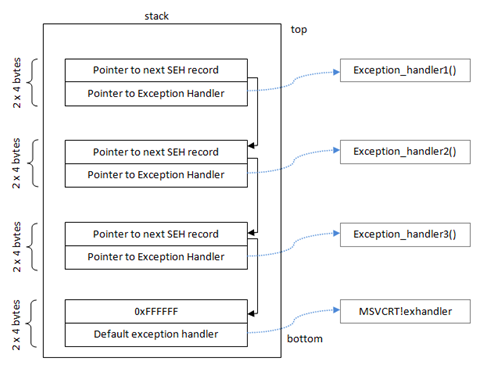Before we start, we need to understand what SEH is. SEH stands for structured exception handling. We may have seen programs throw an error that says the software has encountered a problem and needs to close. This basically means it's the default exception handler of Windows kicking in.
SEH handlers can be considered the block of try and catch statements that are executed in order when there's an exception in the program. This is what a typical SEH chain would look like:

When an exception occurs, the SEH chain comes to the rescue and handles the exception based on its type.
So, when an illegal instruction occurs, the application gets a chance to handle the exception. If no exception handler is defined in the application, we will see an error shown by Windows, such as Send a report...











































































